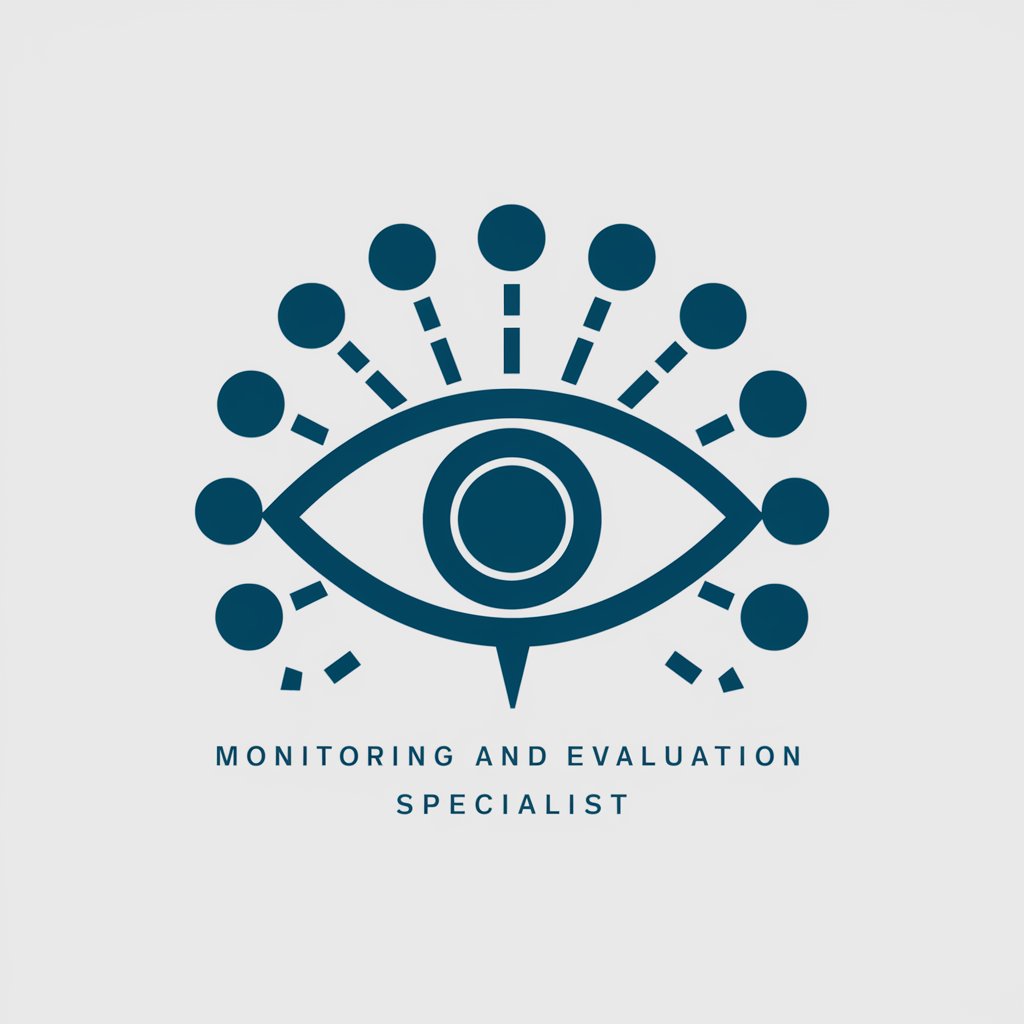Monitoring and Evaluation - AI-Powered Analysis Tool

Welcome! How can I assist you today?
Enhance Performance with AI-Powered Insights
Can you help me analyze the effectiveness of...
What metrics should I use to measure...
How can I improve the tracking of...
Can you provide insights on the evaluation of...
Get Embed Code
Introduction to Monitoring and Evaluation
Monitoring and Evaluation (M&E) are systematic processes that help organizations assess and document the performance and impact of projects, programs, or policies. Monitoring is the continuous observation of a project's progress over time, aimed at providing regular oversight and early indications of progress, or lack thereof, toward achieving objectives. Evaluation, on the other hand, is more episodic and aims to determine as systematically and objectively as possible the relevance, effectiveness, and impact of activities in the context of the stated goals. For example, in a health program aimed at reducing disease incidence, monitoring would involve ongoing tracking of health indicators, while evaluation would involve assessing whether changes in health outcomes can be attributed to the program and not other factors. Powered by ChatGPT-4o。

Main Functions of Monitoring and Evaluation
Data Collection and Analysis
Example
Gathering quantitative data through surveys and qualitative data through focus groups.
Scenario
In an educational program, M&E might collect data on student attendance and graduation rates alongside qualitative feedback from students and teachers to assess impacts and improve the program.
Feedback Mechanisms
Example
Implementing structured processes for collecting stakeholders' feedback.
Scenario
An NGO could use M&E to collect feedback from beneficiaries about the usefulness of agricultural training sessions, using this data to tweak future offerings.
Reporting and Decision Making
Example
Creating detailed reports that summarize findings and guide strategic decisions.
Scenario
A government agency might use M&E reports to decide whether to continue, scale up, or modify a housing subsidy program based on its effectiveness and efficiency.
Accountability
Example
Ensuring stakeholders are held accountable for results.
Scenario
Donors require NGOs to provide evidence of how funds are used and the impact of their interventions, making M&E essential for compliance and transparency.
Ideal Users of Monitoring and Evaluation Services
Non-Governmental Organizations (NGOs)
NGOs need to demonstrate program success and accountability to funders, stakeholders, and the communities they serve, making M&E critical for ongoing funding and operational adjustments.
Government Agencies
These entities utilize M&E to track and demonstrate the effectiveness of public policy initiatives, ensuring taxpayer money is used efficiently and aligning programs with political and social goals.
Educational Institutions
Schools and universities implement M&E to assess educational programs, enhance student outcomes, and meet accreditation requirements.
Corporations
Businesses use M&E to evaluate corporate social responsibility initiatives, internal processes, and training programs to enhance productivity and corporate culture.

How to Use Monitoring and Evaluation
Step 1
Visit yeschat.ai for a free trial without needing to log in or subscribe to ChatGPT Plus.
Step 2
Identify the specific objectives you want to monitor and evaluate. This could include project performance, data analysis, user engagement, or learning outcomes.
Step 3
Select the appropriate tools and metrics for your evaluation. Common tools include surveys, analytics software, and user feedback forms. Metrics might involve completion rates, user satisfaction, or quantitative data analysis.
Step 4
Gather and analyze your data. Use the Monitoring and Evaluation features to track progress and identify trends. This could involve periodic reviews, real-time monitoring, or retrospective analyses.
Step 5
Adjust and optimize based on the insights gained. Use the feedback and data analysis to refine your approach, improve user experience, or enhance project outcomes.
Try other advanced and practical GPTs
Dev Jarvis
Empowering innovation with AI expertise

论文润色
AI-driven academic text enhancement tool

Lietuvių kalbos skyrybos ekspertas
Perfect Your Lithuanian with AI-powered Punctuation

通用翻译器
Power your words with AI-driven translations

Backend Engineering Master
AI-Powered Backend Development Assistance

Backend API Python/ Django/ Django REST Framework
AI-powered backend API development tool.

AstroGPT
Unraveling the universe with AI

Toranj
Empathetic AI for Personal Guidance

HyperAnalizer 1.0
Unlock Insights with AI Analysis

PictoriaGenesis
Empowering Creativity with AI

Grammar Guru
Perfect Your English with AI

回答科学问题bot
Powering Scientific Inquiry with AI

Frequently Asked Questions about Monitoring and Evaluation
What is the primary purpose of using Monitoring and Evaluation in project management?
The primary purpose is to improve project efficiency and effectiveness by systematically collecting and analyzing data to inform decision-making and enhance future performance.
Can Monitoring and Evaluation be used for small-scale projects?
Yes, it can be scaled to fit projects of any size, from small community initiatives to large-scale international programs. The key is to adapt the tools and methods to the scope and complexity of the project.
How does Monitoring and Evaluation contribute to learning and development?
It provides a structured approach to identify what works and what doesn't, facilitating continuous learning and development by highlighting areas for improvement and successful practices.
What are some common challenges in Monitoring and Evaluation?
Common challenges include defining appropriate indicators, ensuring timely data collection, dealing with incomplete data, and integrating insights into the decision-making process.
How can technology enhance Monitoring and Evaluation practices?
Technology can automate data collection and analysis, provide real-time monitoring capabilities, enhance data visualization, and support more effective communication and reporting of findings.
